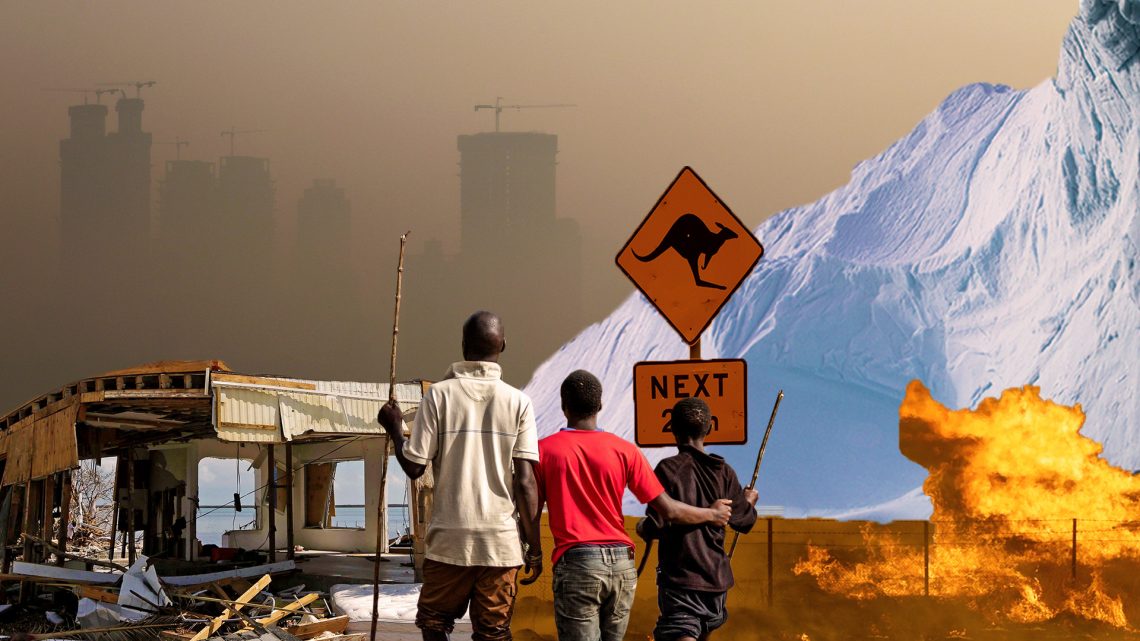
The Planet Is Probably in Worse Shape Than We Can Even Predict
May 10, 2020Want the best of VICE News straight to your inbox? Sign up here.
Sea levels will rise by more than 3 feet. Up to a fifth of everything living in the world’s oceans will die. More than 200 million people will be displaced by rising seas or forced to move to cooler places.
Those are science’s current predictions for what a climate-changed world will look like in 2100. But those estimates could be lowballing how bad the crisis will get.
Scientists rely on elaborate computer simulations that use data from the past to predict what will happen in the future, as people pump more greenhouse gases into the atmosphere. The first climate models, developed in the 1960s, were eerily accurate: They correctly predicted how much hotter the world would be today given the increase in greenhouse gas emissions.
Since then, models have been the basis for the UN’s gold-standard reports that have helped policymakers glimpse into what the climate will look like in the coming decades. They’ve also helped politicians figure out, for example, how high to build sea walls to protect cities from sea level rise.
“I think there does seem to be a change in this new generation of models — and it could be really bad, bad news.”
But scientists worry that today’s climate models might not be as good at predicting the next fifty years — even as tools and data have gotten better. Why? Models are only as good as their inputs. Because the facts on the ground are changing so fast, predictive climate models are getting less reliable, and scientists know it.
“It’s not a surprise that we’re being surprised,” said Theodore Scambos, who studies Antarctic ice sheets at the University of Colorado at Boulder. “We're seeing things occur now that we weren’t anticipating because the world has never been like this before.”
For example, current models have had a hard time predicting the rate at which the Antarctic ice sheets will collapse into the ocean. That’s because they failed to take into account the streams of warm water carving away at the underside of the sheets, which were discovered in 2016.
"These effects matter,” said Karen Alley, a Ph.D. geology student and lead author of the study. “But exactly how much, we don't yet know. We need to.”
The bad news is that most of the new research isn’t about processes that could take carbon out of the atmosphere and make climate change less severe. Quite the opposite: Most of the data that scientists are collecting suggests that global heating will be worse than predicted.
“If you watch how the reports have changed,” said Jessica Hellman, the director of the University of Minnesota’s Institute on the Environment, “more of our errors have tended to be underestimations of how bad things could be.”
Some of the newest climate models, generated last year with the most detailed data to date, reveal a hotter, less-predictable future.
“I think there does seem to be a change in this new generation of models — and it could be really bad, bad news,” said Kate Marvel, a climate scientist at Columbia University and the NASA Goddard Institute for Space Studies.
Clouds, forests, and “abrupt thaw”
Historically, most climate models assumed that the billions of trees in the worlds’ rainforests would continue to suck carbon out of the atmosphere for decades to come. But a study published in March suggests that forests have been so degraded, by both fires and deforestation, that they’re losing their ability to store carbon.
“We’ve found that one of the most worrying impacts of climate change has already begun,” said Simon Lewis, professor in the school of geography at Leeds University, one of the senior authors of the research said in a statement. “This is decades ahead of even the most pessimistic climate models.”
Scientists also don’t yet know for sure how much methane and carbon could be emitted as permafrost, the permanently frozen layer of ground in the Arctic, thaws. An estimated 1,400 gigatons of carbon are trapped permafrost: That’s nearly twice the 850 gigatons of carbon currently in the atmosphere.
Models once predicted that carbon would leach out slowly, but in the last few years, scientists have started to learn about a process called “abrupt thaw,” in which water from melting ice in the ground can cause an area of permafrost to thaw all at once. When that process is taken into account, up to 50% more greenhouse gases could seep out of the Arctic in the next few hundred years, according to Ted Schuur, an ecosystems ecologist at Northern Arizona University — and that could irrevocably alter the climate.
“We’re starting to make the case that this is significant at the global scale,” Schuur said.
As scientists learn more about the way the world’s climate systems work, some models are starting to predict a hotter future.
Past models have held, for example, that doubling of carbon dioxide in the atmosphere would warm the planet about 3 degrees Celsius. New models are starting to suggest that might not be the case — because of clouds. Scientists now know that a hotter world will have fewer clouds, which could set off a vicious cycle: As the world heats up cloud cover becomes more sparse, which in turn makes the planet even hotter.
The upshot of that cycle, which is only just starting to be fully understood and worked into the models, is that doubling the amount of carbon dioxide in the atmosphere could lead to warming of up to 5.6 degrees Celsius. That’s a cataclysmic increase and especially concerning because we’re already halfway to doubling CO2 from pre-industrial levels.
“The warmer it gets the less successful the models are,” Michael Oppenheimer, a lead author of the UN Intergovernmental Panel on Climate Change’s recent report on the oceans and polar regions told VICE News. “My own view is that I feel fairly comfortable with what the models are saying up to about a couple of degrees.”
Preparing for the future
All of this makes planning for the future increasingly hard for policy makers. Waters around New York City, for example, are predicted to rise somewhere between 4.17 feet and nine feet by 2100, according to estimates from the New York City Panel on Climate Change.
But there’s a big difference between four and nine feet — and both could be too low. And the models don’t all take into account the worst-case scenario where the ice sheets in West Antarctica collapse, which could raise sea levels more — by about 12 feet.
Policymakers in the Trump administration, like the head of EPA, have been eager to play up the increasing “scientific uncertainty,” to argue that we just don’t know enough to act. “There is still a lot of work on the modelling and we still don't understand a lot of what the climatologists are saying,” Andrew Wheeler told Folha de S.Paulo, a Brazilian newspaper, in February.
To him, the worst-case scenario in the models is more fatalistic doom-and-gloom reporting from the climate community.
“There was just an article today about the worst-case scenario model … which I criticized last year,” Wheeler told Folha de S.Paulo. “There is a lot of misinformation, a lot of fear mongering around the issue.”
Most scientists don’t think climate change predictions are too dire — rather, they might not be dire enough. In addition to reducing emissions, municipalities need to prepare for the worst.
“When we use the models, when we look at a future where we do have reduced carbon emissions — that world is very different from one where we don’t do anything,” Ted Schuur, a permafrost ecologist at Northern Arizona University. “When people go, ‘It's too late I can't do anything’ — it's the opposite.”
Cover: Collage created by Danny Card. Image credits from left to right: AP Photo/Alan Diaz; AP Photo/Rafiq Maqbool; Photo by James Wakibia / SOPA Images/Sipa USA (Sipa via AP Images; Christian Pondella / Red Bull Content Pool via AP Images; AP Photo/Rick Rycroft


